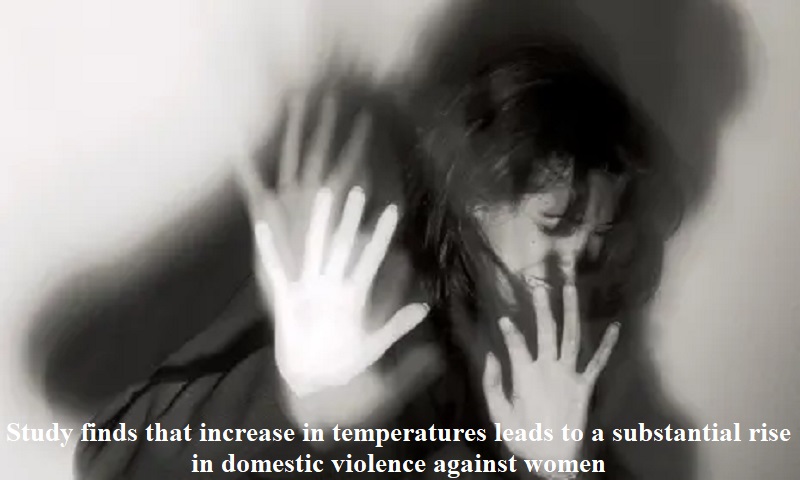
A recent study published in the journal JAMA Psychiatry has revealed that an increase in temperatures leads to a significant rise in domestic violence against women. The study focuses on India, Pakistan, and Nepal between 2010 and 2018, where thousands of girls and women shared their experiences of emotional, physical, and sexual violence.
The research also predicts that if no actions are taken to limit emissions causing global warming and climate change, India could experience the highest rate of violence against women among the three countries by the 2090s.
According to the study, a one-degree Celsius increase in average annual temperature is associated with a more than 6.3 percent increase in incidents of physical and sexual domestic violence across the three countries.
To investigate the prevalence of intimate partner violence (IPV) and its types (physical, sexual, and emotional violence), the researchers tracked 194,871 girls and women aged between 15 and 49 in India, Pakistan, and Nepal.
The study found a significant association between high ambient temperature and the prevalence of IPV against women. With every one-degree Celsius increase in annual mean temperature, the researchers observed a total IPV prevalence of 4.49 percent.
Under the “unlimited emissions scenarios,” the research projects a potential increase of up to 21 percent in IPV prevalence by the end of the century. However, if measures are taken to reduce emissions contributing to climate change, the prevalence of IPV would moderately increase.
The study also highlights that physical and sexual violence had significantly higher prevalence rates (28.3 percent and 26.1 percent, respectively) compared to emotional violence (8.9 percent).
Michelle Bell, a professor of environmental health at Yale University and a co-author of the study, suggests that higher temperatures could affect the risk of violence through various physiological and sociological pathways.
Extreme heat triggers a cascade of socio-economic effects, such as crop failures, income loss, and confinement at home without means to earn a daily wage. These factors contribute to increased pressure on households and a rise in violence against women.
The research reveals that IPV is more prevalent in lower-income and rural households compared to heat-related violence in higher-income groups. The study covered all income groups.
Bell also emphasizes that extreme heat can increase stress, lower inhibitions, escalate aggression, and worsen mental illness.
India is projected to have the highest IPV prevalence among the three countries in the 2090s, with a rate of 23.5 percent, while Nepal is estimated at 14.8 percent and Pakistan at 5.9 percent. India has already witnessed heat-related deaths this year, with temperatures reaching up to 45 degrees Celsius in certain regions.
Suniti Gargi, a former employee of Uttar Pradesh’s Commission for Women and an activist, believes that climate change is exacerbating heatwaves in India and connecting them to increased domestic violence. She notes the economic stress caused by high temperatures, where men are unable to migrate for work, leading to anger and feelings of uselessness that impact their wives.
The study sheds light on the concerning relationship between temperature rise, climate change, and the prevalence of domestic violence against women, urging action to address the underlying factors contributing to this issue.

Post Your Comments